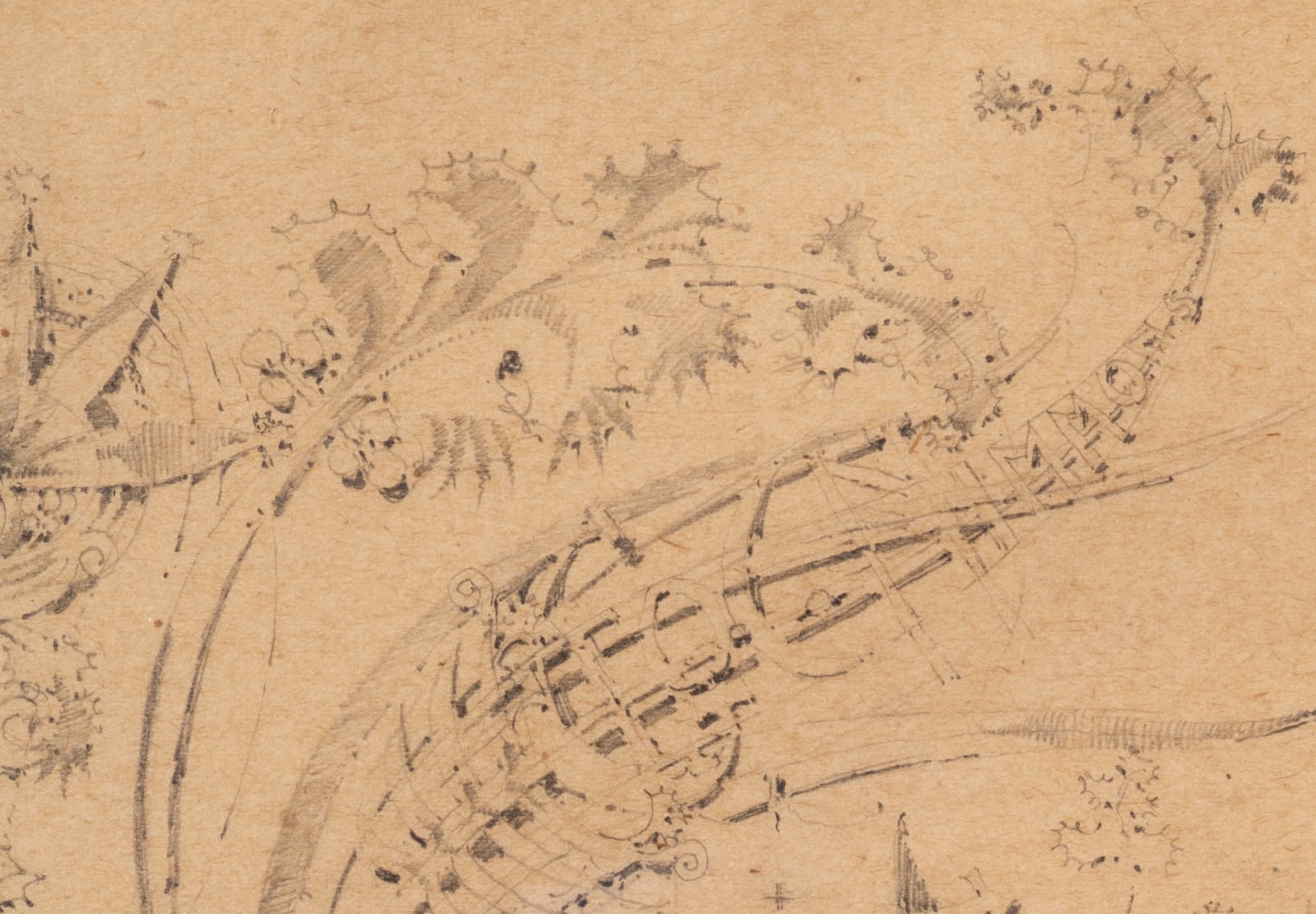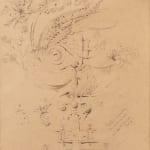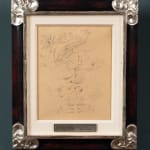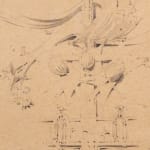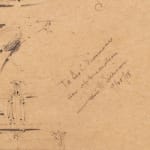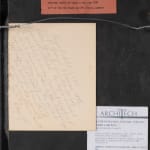Louis Henry Sullivan American, 1856-1924
Further images
Architects produce numerous drawings throughout their careers to sell ideas and convey plans; their drawings are more often considered practical tools rather than works of art. However, for a trailblazing architect like Louis Sullivan, drawings were more than just business proposals. Although Sullivan coined the phrase "form follows function" and played an integral part in the rise of modern skyscrapers in the United States, he also deftly incorporated organically inspired ornamentation into all aspects of his work, which ultimately became his signature.
The present work, signed and dated by Sullivan in 1918, is a supreme example of his artistic sensibility and design ethos. Despite his declining health, Sullivan's hand remained remarkably steady and meticulous. As a result, the drawing showcases an intricately yet vibrantly composed ornamental design, featuring whiplash curves, star-shaped flowers and rhythmic foliage—all harmoniously stemming from the center structure, reminiscent of one of Sullivan's iron frames. At the top center of the composition, the recipient George C. Nimmons' name is skillfully stylized and blended into the flowing leaves. The calligraphy evokes the image of a bird's rib cage, with swirling forms resembling wings that swoop downward into the arrangement, perhaps to feast on a stylized berry. In the lower right, Sullivan expresses his gratitude to Nimmons with an inscription, making it clear that this drawing was a gift of esteem.
George C. Nimmons was an Ohio-born, Chicago-based architect who led an illustrious career from 1897 until his retirement in 1945. His work included notable projects such as the Sears, Roebuck and Company Administration Building, Chicago (1905), Homan Square Power House, Chicago (1905) and Ponce City Market, Atlanta (1926). He also served as a president of the local chapter of the American Institute of Architects, and a member of the Illinois Society of Architects.
It is estimated that between 500 to 600 drawings by Louis Sullivan himself exist today (excluding floor plans that may have been executed by one of his draftsmen), with the majority housed in the collections of the Art Institute of Chicago and the Avery Architectural & Fine Arts Library at Columbia University, and a small number at the University of Michigan's Bentley Historical Library. The Art Institute of Chicago's drawing collection was commissioned in 1922 by the then-new Burnham Library of Architecture and published by the American Institute of Architects in 1924 under the title A System of Architectural Ornament. Drawings like the present example may have intellectually inspired the concept of this opus, which was funded by his friends and admirers.
Beyond these institutional collections, fewer than a dozen Sullivan drawings have been identified in private hands, making this example an extremely rare and valuable survivor of Louis Sullivan’s architectural legacy.


